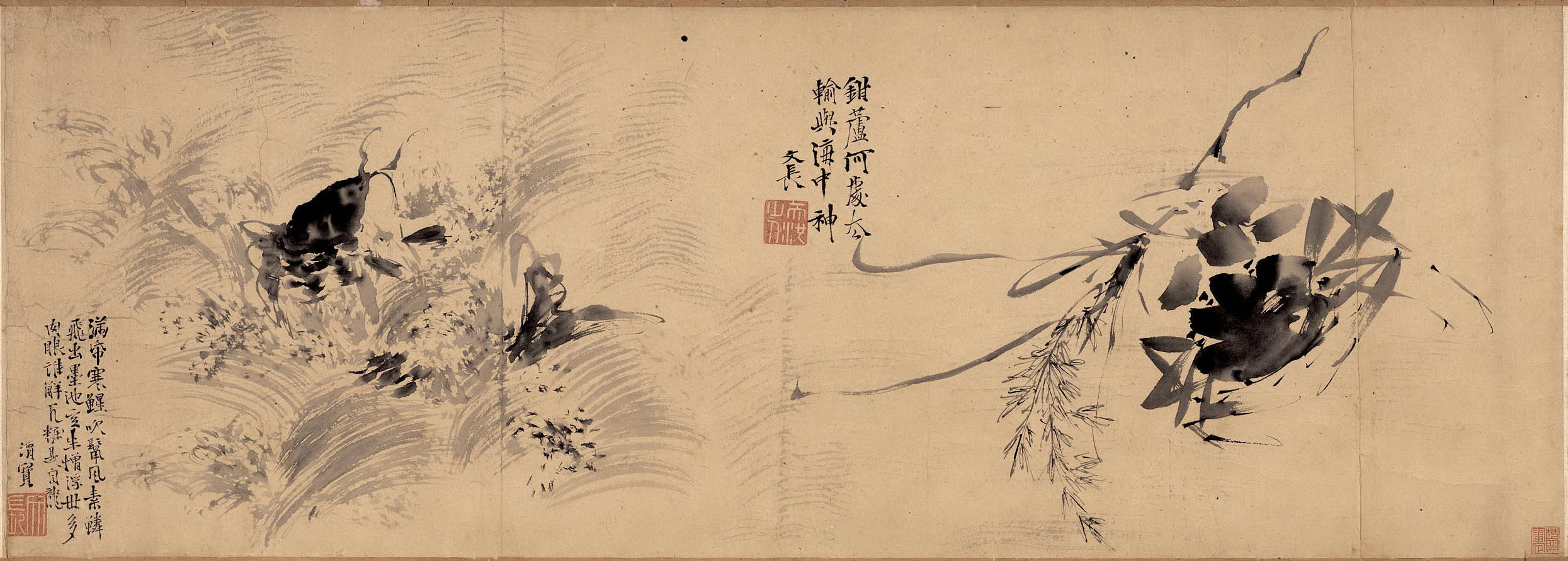Not all artistic endeavors worthy of ‘xieyi’ label

Fish and Crab by Xu Wei (1521-93)
Xieyi is a complex concept in Chinese painting, referring to a freehand genre of brush painting. Usage of the term now permeates other artistic fields, such as sculpture and oil-painting, or even domains unrelated to art, like the furniture brand Xieyi Space. Despite this popular usage of the term, authentic xieyi painting is actually witnessing a decline.
The term Xieyi was once reserved for a specific style of painting. Now the public is under the impression that it covers a wide range of styles, and a vast majority of people from teenagers to seniors are all engaged in the creation of xieyi painting.
However, research institutions and professional organizations lack artists and researchers who specialize in this particular genre. Quality works are seldom seen in official exhibitions.
To better understand the true meaning of the term, we need to clarify the relationship between its technical and conceptual connotations. Freehand brush painting has always existed as a technique in Chinese art. But as a technique, it inevitably represents a certain concept and spirit, which can be said to be the conceptual xieyi. Therefore, xieyi in Chinese painting is an integration of form and connotations.
But the practice now in the modern creation of this artistic genre tends to separate technique from concept. Artists stress the technical aspect of the style, while neglecting to explore its spirit. Therefore, artistic creation becomes mere imitation.
Xieyi paintings should depict the key aspects of an image, which requires active and repeated deliberation by the artist to grasp its soul and substantial attributes. For example, Qi Baishi (1864-1957), one of the most well-known contemporary Chinese painters, was noted for shrimp paintings. He watched shrimp every day and turned the image over in his mind. Shrimp images in his paintings then became purer and simpler with time, capturing the typical characteristics of these creatures.
Xieyi painting is powerful in expressing one’s emotions. For example, through paintings of grapes and pomegranates, Xu Wei (1521-93), a Ming Dynasty Chinese painter, expressed his resentment toward society and lamented the circumstances of his own life. He sketched lines and alternately used drops in his paintings to produce rhythms that reflected the artist’s mood and state of mind.
Xieyi paintings exhibit the temperament of the artist. An artist’s spiritual state determines the taste and style of the paintings. His or her moral quality, learning and accomplishment are all expressed. Chinese artists have long held the belief that one’s disposition is fundamental to artistic creation, so they emphasize improving the artist’s inner world and personality. It is this respect which best shows that xieyi is not only a technique but also an expression of meaning. This is the true challenge of xieyi painting.
The term xieyi in Chinese painting always stresses the combination and integration of both techniques and ideas, and its application in other fields should also pay attention to this integration. This is why painters in this genre should strive to improve techniques while elevating their accomplishments as well to rejuvenate the artistic form. While in other fields, random use of the word only as an appealing yet empty term should be curbed, and excellent works are needed.
Yin Shuyu is an assistant research fellow at the Chinese National Academy of Arts.
